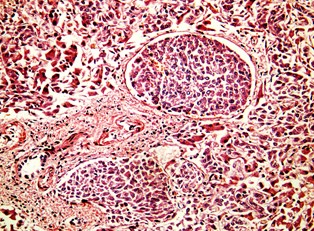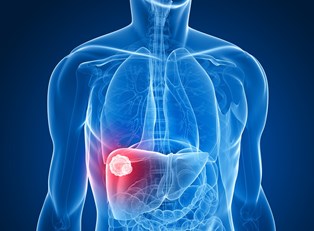The human liver is a big organ with many big jobs. Located to the right of the stomach and just below the diaphragm, it is the body's largest gland, weighing between 3.2 and 3.7 pounds. The liver's main job is to act as a filter, keeping the blood free of harmful substances that must leave the body as waste. The liver also stores energy-giving sugar and makes protein and bile, which helps to digest fat.
Risk Factors
As with all vital parts of the human body, problems occur when the liver becomes damaged and cannot perform its normal, necessary functions. The risk factors for getting cancer of the liver include a family history of the disease, other liver problems such as hepatitis B, obesity, heavy smoking, and being male. Men are more likely than women to get liver cancer. However, the majority of people diagnosed with primary liver cancer have cirrhosis, marked by scarring of the liver and often the result of alcohol abuse.
Symptoms
During the early stages of liver cancer, there may be no symptoms at all. When and if the liver swells, a person may experience pain or lumps on the right side of the abdomen, fatigue, unexplained weight loss, nausea, appetite loss, dark urine, and jaundice, which makes the skin appear yellow.
Diagnosis
If these or other unusual symptoms appear, a doctor may order tests to confirm a liver cancer diagnosis. Blood tests may indicate elevated liver enzymes, which can mean liver trouble. A computed tomography (CT) scan can take a detailed image of the liver. An angiogram injects dye into an artery to check for tumors. A laparoscope, which is a thin tube with a light, can take a look at the liver and other organs.
If liver cancer is detected, the initial concern is to determine how far or if the cancer has spread. In a so-called staging process, a number is given to each stage, from 1, which means the cancer has not spread from the original site, to 5, which indicates it is now found in other parts of the body, such as bones or blood vessels. Where the cancer is located and how far it has spread indicate the type of treatment that will be required.
Treatment
Treatment can include surgery to remove the cancer; chemotherapy, which uses a drug regimen; and percutaneous ethanol injection, which sometimes requires injecting alcohol into a tumor in an effort to destroy it. How well any treatment works and life expectancy after a diagnosis of liver cancer depend mainly upon the person's overall general health and how far the cancer has spread.
Chemotherapy
Unfortunately, chemotherapy cannot completely eliminate liver cancer—it can only slow down the progression of symptoms. However, it can be used in conjunction with other treatments to move patients towards a full recovery. For example, chemotherapy may be able to shrink inoperable tumors down to a size where they can safely be removed by surgeons. Additionally, chemotherapy may be used after the removal of tumors to ensure that the liver cancer does not return.



